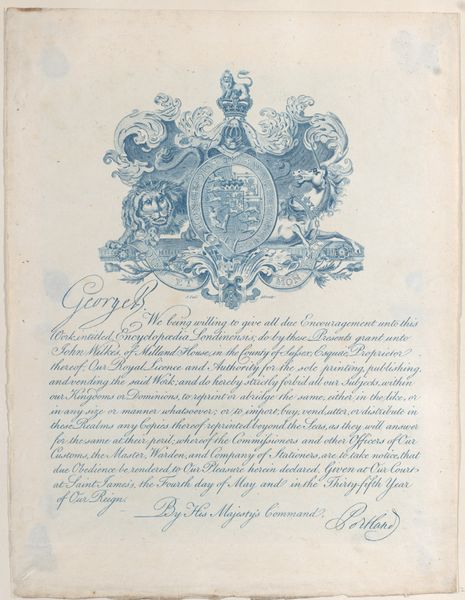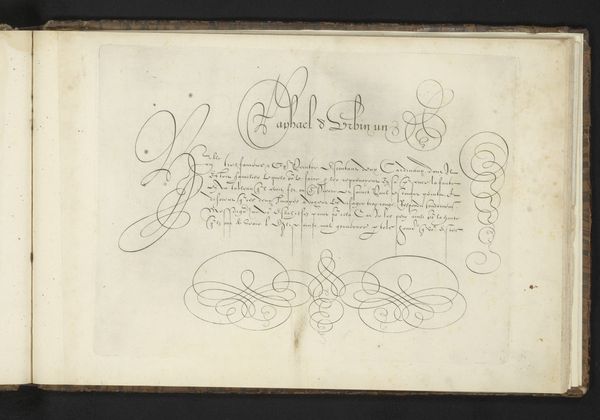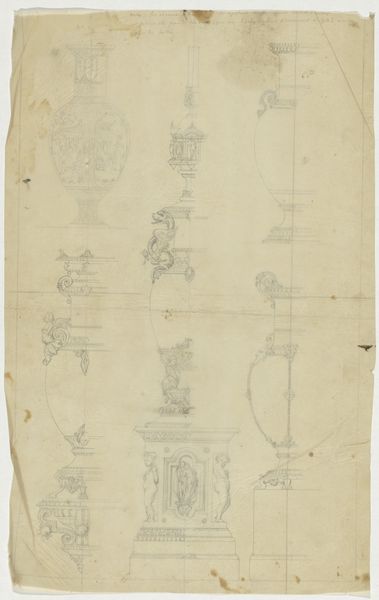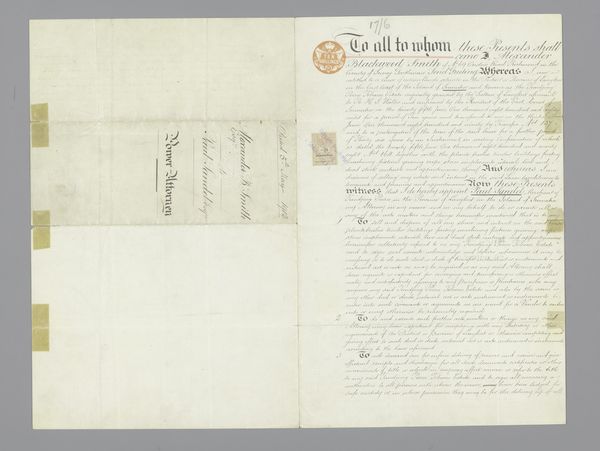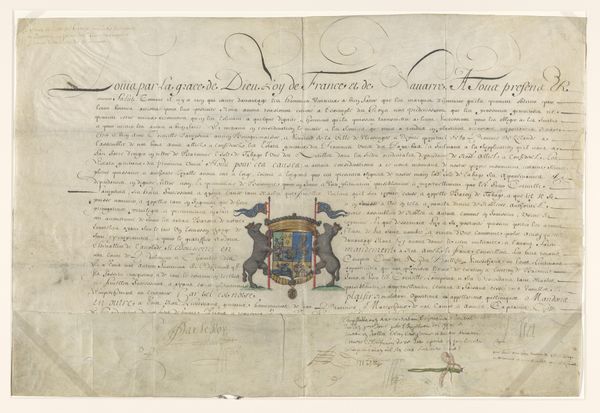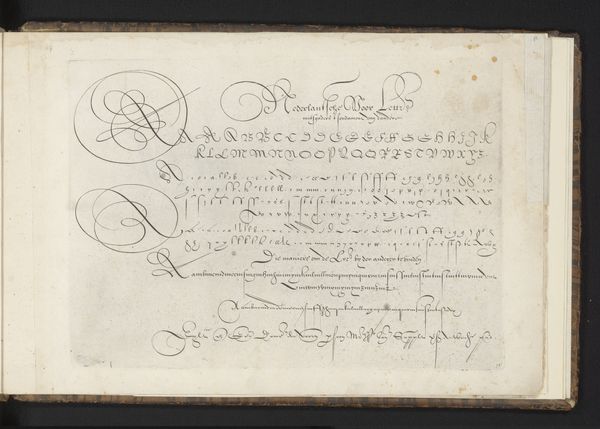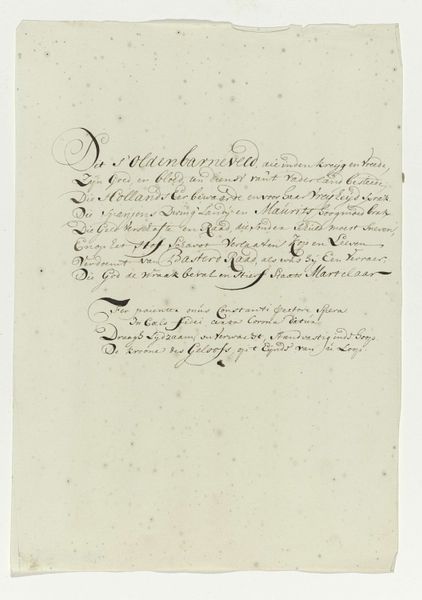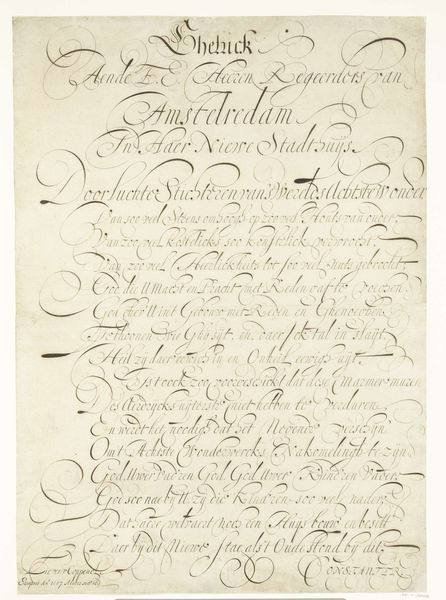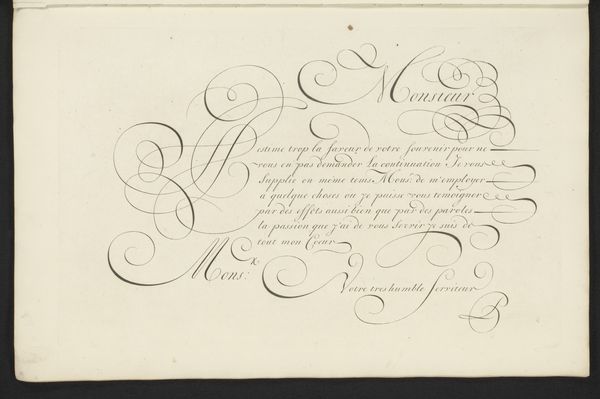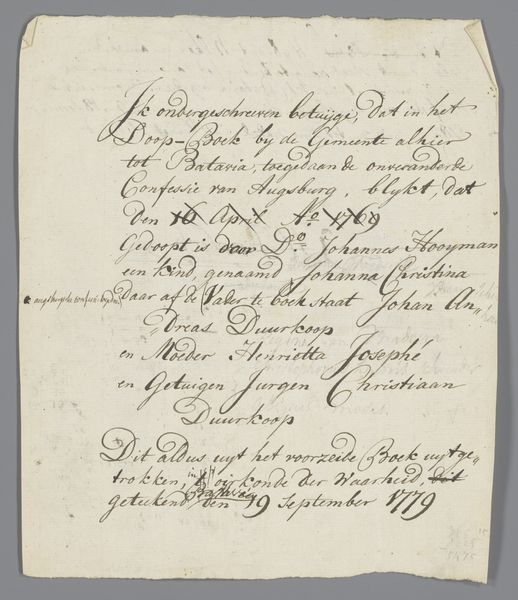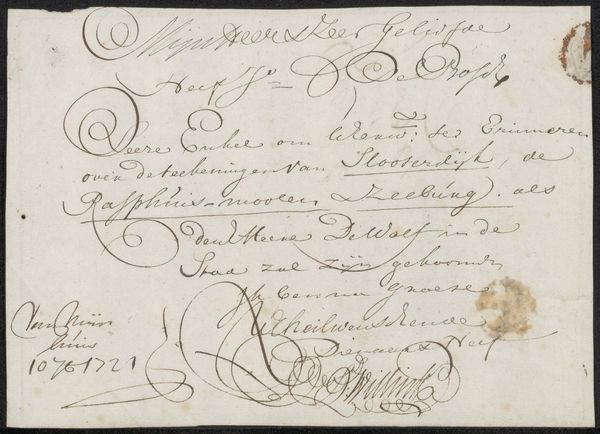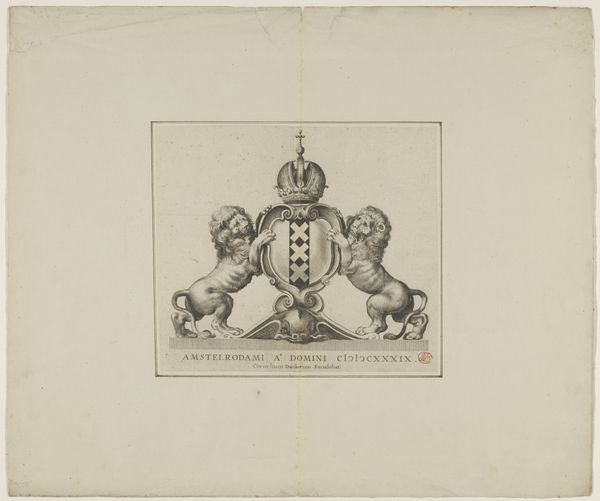
drawing, print, paper, pencil
#
drawing
# print
#
etching
#
paper
#
geometric
#
pencil
#
history-painting
#
academic-art
Dimensions: sheet: 9 3/4 x 11 in. (24.8 x 27.9 cm)
Copyright: Public Domain
Curator: At the Metropolitan Museum, we have this "Design for coat of arms," created by an anonymous artist sometime between 1700 and 1800. It is a drawing using pencil, etching, and print on paper. Editor: My initial impression is of delicate precision. It looks incomplete somehow, like a ghost of something grander. The starkness emphasizes its formal nature. Curator: The use of pencil and etching is fascinating, isn't it? These materials weren't always considered "high art" media. By using them in a heraldic design, it questions established ideas of what constitutes valuable artistic production, especially within the social structures linked to coats of arms and nobility. Editor: Absolutely, and we should note what coats of arms symbolized: inherited privilege, power concentrated in a few hands, maintained across generations, generally tied to systemic oppressions of race, gender, class. So the creation of this design, perhaps for a noble family, is complicit in visually perpetuating hierarchies. Curator: It’s also crucial to examine the labor involved. Someone painstakingly drafted this, choosing the materials, perhaps under commission. The social relationships inherent in artistic creation—patron, artist, artisan—shaped what was eventually produced. Editor: Precisely, that's a network of influence reflecting existing class and gender biases. Looking closer, the eagle symbol… is that intended to evoke Roman power? A strategic nod to imperial history? How is this symbolism manipulated to present a family lineage? Curator: A worthwhile question. The piece's formality—the careful layout, geometric precision, the scripted text flanking it—reinforces its intention. Even unfinished, it speaks to aspiration. Editor: That’s what disturbs me – the ways aesthetic choices bolster unequal systems, turning even simple images into emblems of ongoing struggles for social justice. Curator: I agree that context adds immense weight. Examining the materials and production provides insight into how such images gain meaning and function within power structures. Editor: So in this image we see the tensions between craftsmanship, inherited authority and the persistent need for social progress. A modest work, yet it embodies so much.
Comments
No comments
Be the first to comment and join the conversation on the ultimate creative platform.
